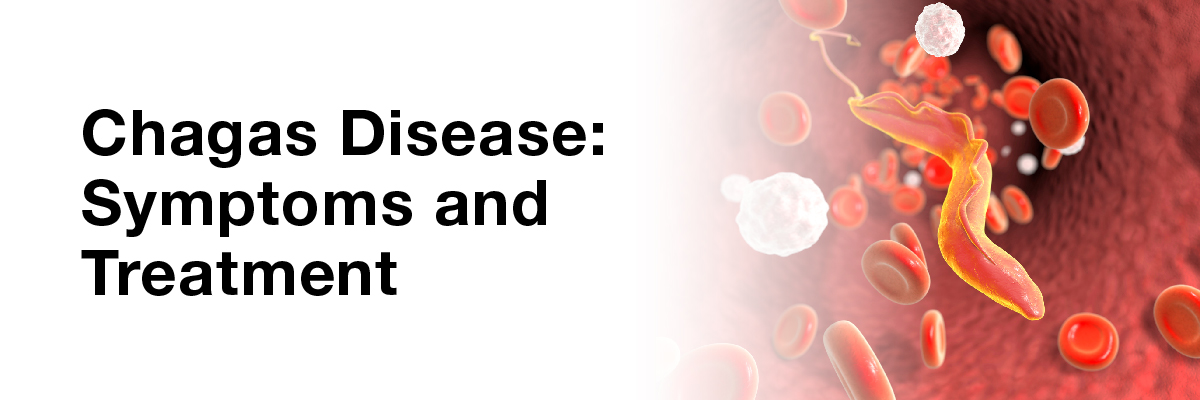
 Mrs. Mayuri Mathur
Mrs. Mayuri Mathur
Chagas Disease: Symptoms and Treatment
Chagas disease, an inflammatory, infectious disease, is caused by the parasite Trypanosoma cruzi, which is found in the feces of the triatomine (reduviid) bug, also known as the "kissing bug." It is also called American trypanosomiasis and is a potentially life-threatening illness. WHO, in 2005, acknowledged Chagas disease as a neglected tropical disease (NTD).
Chagas disease is widely prevalent in South America, Central America, and Mexico, the primary home of the triatomine bug. However, rare cases of Chagas disease have also been reported in the southern United States.
Disease Spread and Transmission
Chagas disease is caused by the parasite Trypanosoma cruzi, spread from an insect called the triatomine bug, which becomes infected after they swallow blood from an animal infected with the parasite. These bugs cave in wall crevices, roofs, or peri-domiciliary installations, like chicken coops, pens, and warehouses, predominantly in rural or suburban areas. They hide during the day and become active at night, often feeding on sleeping humans. After feeding, they leave parasites on the skin through their poop, which enters the human body through the eyes, mouth, a cut or scratch, or the wound from the bug's bite. Scratching or rubbing the bite site enables the parasites to enter the body. Once inside the body, the parasites multiply and spread.
Other ways they can infect are-
• Consuming uncooked food soiled with feces from bugs infected with the parasite
• Being born to an infected mother
• Receiving a blood transfusion or an organ transplant from an infected person
• accidental exposure to the parasite while working in a lab
• Spending time in a forest containing infected wild animals.
These causes also represent the risk factors for catching the infection.
Signs and Symptoms
Chagas disease can cause both acute and chronic symptoms, ranging from mild to severe. In some cases, individuals may not experience any symptoms until the chronic stage of the disease.
The acute phase of Chagas disease- endures for weeks or months and is usually symptom-free. Less than 50% of individuals bitten by a triatomine bug show typical first visible signs, i.e., a skin lesion or a purplish swelling in one eyelid. Additionally, there can be mild symptoms like-
• Infection site swelling
• Fever
• Fatigue and Body pain
• Rash
• Pallor
• Headache
• Appetite loss
• Nausea, diarrhea, or vomiting
• Swollen lymph glands
• Liver or spleen enlargement
• Breathing difficulty
Acute phase symptoms usually go away independently. However, the disease may advance to the chronic phase in some untreated cases.
The chronic phase of Chagas disease- may observe the appearance of symptoms 10 to 20 years after the initial infection or never. The severe cases may show signs and symptoms like-
• Chest pain.
• Heart palpitations.
• Breathing difficulty
• Difficulty eating and passing stool.
• Dizziness.
• Fainting.
• Fatigue.
• Swallowing difficulty due to enlarged esophagus
• Stomachache or constipation due to an enlarged colon
The chronic phase may also be associated with complications like-
• Sudden death.
• Unstable heartbeat
• Heart failure
• Sudden cardiac arrest
• Neurological problems
• Enlargement of the esophagus and colon
Diagnostic Procedures
The doctor can diagnose Chagas disease using a blood test identifying antibodies against the parasite. After a positive diagnosis and complete history, the doctor may advise cardiac testing to identify heart or gastrointestinal complications. The tests may include the following-
• Echocardiogram- create a detailed picture of the heart utilizing sound waves.
• Electrocardiogram (EKG, ECG)- registers the heart's electrical activity using electrodes attached to your skin.
• X-ray or CT scan of the abdomen or chest- checks for an enlarged colon or esophagus.
Management and Treatment of Chagas Disease
During the acute phase of infection, its treatment focuses on killing the parasite. Medications can be helpful for individuals experiencing reactivation of infection (such as due to immunosuppression) and for patients during the early chronic phase, including girls and women of childbearing age, to check the congenital transmission. Infected adults, specifically those without symptoms, should also receive treatment as it prevents or curbs disease progression. Individuals may also require specific treatment for cardiac, digestive, or neurological manifestations.
In cases of chronic disease, the parasite cannot be eliminated, so treatment focuses on controlling the symptoms. If left untreated, the condition can lead to serious complications.
Control and Prevention
Since the wild animals of the Americas hold a large reservoir of T. cruzi parasites, the infection cannot be eradicated. Hence it can be controlled by eliminating the transmission to humans and providing early healthcare access to the infected people. People who reside in a high-risk area for Chagas disease can take these steps to prevent infection:
• Avoid spending nights in a mud, thatch, or adobe hut, as they are more likely to harbor triatomine bugs.
• Use insecticide-soaked netting over your bed while sleeping in these settings.
• Use insecticides to clear insects from your residence.
• Use insect repellent on uncovered skin.
• Practice house improvements and house cleanliness.
• Use preventive measures like bednets and good hygiene practices in food preparation, conveyance, storage, and consumption.
There are no vaccines for containing this disease.

Mrs. Mayuri Mathur
Mrs. Mayuri Mathur is a Senior Medical Writer (Patient education and digital) and seasoned content creator with a rich tapestry of expertise spanning over ten years. With a diverse background in content creation, she brings a wealth of experience to the table, from crafting insightful medical articles to developing comprehensive patient education materials, dynamic press releases, and captivating brochures and website content. Throughout her illustrious career, she has demonstrated an exceptional knack for distilling complex medical concepts into easily understandable content, making her a trusted resource for both professionals and lay audiences alike. Her meticulous attention to detail and innate creativity have enabled her to deliver content that not only informs but also engages and inspires. Whether elucidating intricate medical procedures or crafting compelling marketing materials, her versatility and dedication shine through in every project she undertakes. Her passion for writing, coupled with her profound understanding, makes her an invaluable asset to any team or project. In a constantly evolving digital landscape, where effective communication is paramount, Mrs. Mayuri Mathur stands out as a beacon of excellence, consistently delivering top-notch content that resonates with audiences across diverse platforms.

.png)
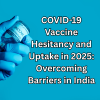
.png)
.png)

.jpg)


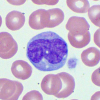
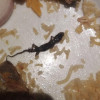

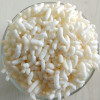

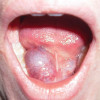


Please login to comment on this article